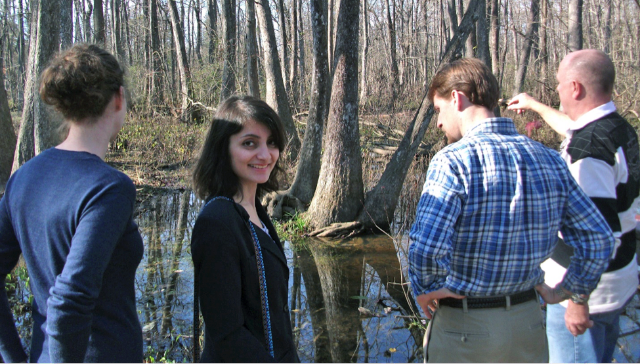Seoul has a number of historical walks that one can sign up for through the Visit Seoul website, and I certainly have availed this service a multiple times. You can go to their website, and if you want to see some additional sites in the area, you can check out Klook or Voyagin, that have really affordable deals.
One of the walks I signed up for, was through Insadong, which happens to be an exciting road on its own rights, but also offers more in terms of history.
The name, Insadong, itself is based on two towns whose names ended in the syllables "In" and "Sa." They were divided by a stream which ran along Insadong's current main street. It began 500 years ago as an area of residence for government officials. During the Japanese occupation, the wealthy Korean residents were forced to move and sell their belongings. The site became an area for trading in antiques. It was a popular destination among foreign visitors to South Korea during the 1960s, who called the area Mary's Alley. In 1988, it became a historic and cultural street.
Our tour began our tour through Tapgol Park which I had heard from another friend of mine, has a somewhat sketchy reputation because old men hunt for women here.
However, what we found out from the tour was how important the park was historically. More recently, it was the starting point of the March 1, 1919 Independence Protest. On the walls, you can see friezes of Japanese soldiers and Korean people. Before coming to Korea, I never had any clue how complicated the relationship between the two countries was, but since living in Seoul, I was shocked to hear of the Japanese occupation. This park is certainly a reminder of that.
But even before the independence movement, the Tapgol park holds history from the Josean period. It used to be the site of a 15th-century Buddhist temple known as the Weongaksa Temple. A ten storied stone pagoda and a few relics of the temple still can be seen in the park. The ten story pagoda is now under glass to prevent damage from carbon dioxide and was the main site where the Weongaksa Temple was situated. During the Goryeo Dynasty, one of the three main dynasties in Korea, it was known as Heungboksa Temple. When Buddhism was repressed during the reign of Yeonsangun and Jungjong, the temple was destroyed.

Besides the pagoda, there is a pavilion at the center of the park. The park contains several national treasures, including Wongaksaji Sipcheungseoktap and Weongaksabi, and Palgakjeong, where the Independence Proclamation was read; the independence movement relief plate; and the statue of Son Byeong-hee.
After Tapgol, we headed to the Central Temple of Cheondogyo, known to be the head temple for the religion of Cheondoism. Basically, Cheondoism is based on the Confucian movement with an emphasis on Taoism, Buddhism, Korean nationalism, and ideas of peace, personal virtues, and morals while on earth. The religion rejects the idea of an afterlife but focuses on paradise on earth. Cheondogyo literally means “Religion of the Heavenly Way.”
The Cheondogyo Central Temple was built between 1918 and 1921 and looks like a Church, and was originally part of the Donghak, or Eastern Learning, reform that focused on the idea that all human beings were equal. Construction on the Cheondogyo Central Temple was started in 1918 and coincided with the March 1st Independence Movement. Thus, the temple also stood as a symbol for the building up of the nation and for the people against the Japanese invasion and occupation of Korea. At completion in 1921, the temple was considered one of the most magnificent and tallest buildings in Seoul along with Myeongdong Cathedral and Japanese General Government Building, once located near Gwanghwamun Gate.
Thereafter, we walked towards the Kyungin Museum of Fine Art where my mother ended up spending most of her time reviewing the artwork. The Museum was originally a residential palace for Bak Yeonghyo, a member of the royal family before it was converted into a museum. It is divided into three gallery halls, an outdoor gallery hall, an outdoor stage where many events take place, a screen, and finally a traditional teahouse known as Dawon. Sadly, we did not get to spend time at the tea house, although that is on my checklist!

Our tour proceeded through the busy pedestrian road, where the guide tried his past to keep us going without stopping to make any purchases. After some self control, we made a stop at the Jogyesa temple, which I had never visited but known about from the numerous advertisements for a templestay. Anyways, we discovered that there was a Chrysanthemum festival going on at the temple. The temple itself is the head temple of the Jogye Order, which is a representative order of Korean Seon (Zen) Buddhism. Its quite a grand temple, that was built in 1910. Daeungjeon Hall is the main hall of the temple, its majestic size often compared to that of the halls of the grand palaces, and the frames of its paper sliding doors are decorated with a beautiful flower designs that are particularly famous. With these artistic features, Daeungjeon is highly praised for its splendid and elaborate design.
We spent the remainder of the evening exploring the main pedestrian street, which most of us know as the real Insadong. The good thing is it was a Sunday so the entire street is closed to traffic on Sundays. Along the street, there are a wide variety of vendors selling some really cool trinkets, albeit a little more expensive than in other places. However, we found a guy who did block prints and hand prints, selling art for a ridiculously low price. Otherwise, Insadong is great for morning and afternoon fun!








0 comments